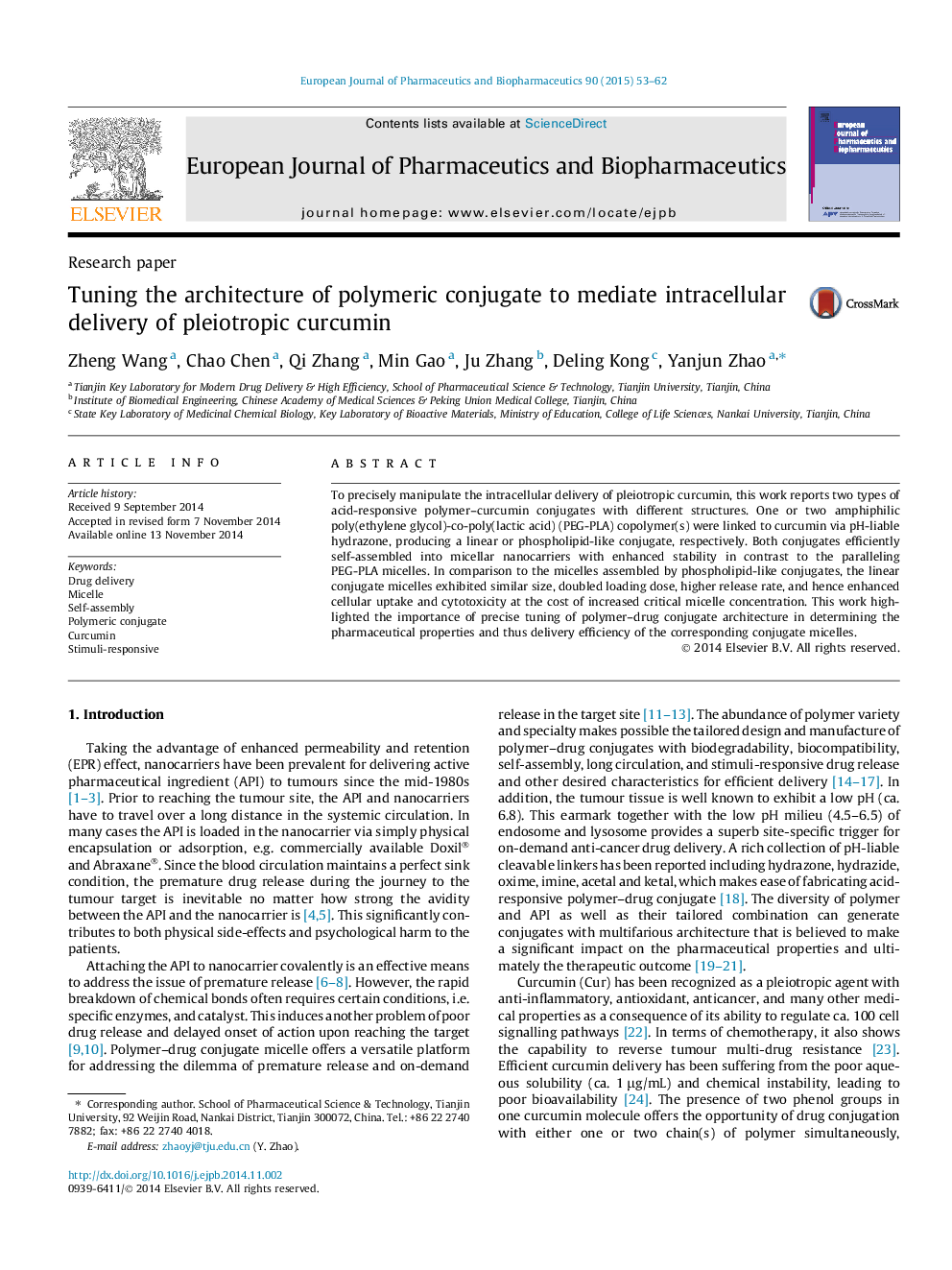| Article ID | Journal | Published Year | Pages | File Type |
|---|---|---|---|---|
| 2083410 | European Journal of Pharmaceutics and Biopharmaceutics | 2015 | 10 Pages |
•Acid-responsive polymer–curcumin conjugate can avoid premature drug release.•The use of hydrazone linker can achieve on-demand intracellular drug release.•The conjugate architecture determines its pharmaceutical properties.
To precisely manipulate the intracellular delivery of pleiotropic curcumin, this work reports two types of acid-responsive polymer–curcumin conjugates with different structures. One or two amphiphilic poly(ethylene glycol)-co-poly(lactic acid) (PEG-PLA) copolymer(s) were linked to curcumin via pH-liable hydrazone, producing a linear or phospholipid-like conjugate, respectively. Both conjugates efficiently self-assembled into micellar nanocarriers with enhanced stability in contrast to the paralleling PEG-PLA micelles. In comparison to the micelles assembled by phospholipid-like conjugates, the linear conjugate micelles exhibited similar size, doubled loading dose, higher release rate, and hence enhanced cellular uptake and cytotoxicity at the cost of increased critical micelle concentration. This work highlighted the importance of precise tuning of polymer–drug conjugate architecture in determining the pharmaceutical properties and thus delivery efficiency of the corresponding conjugate micelles.
Graphical abstractFigure optionsDownload full-size imageDownload high-quality image (65 K)Download as PowerPoint slide
